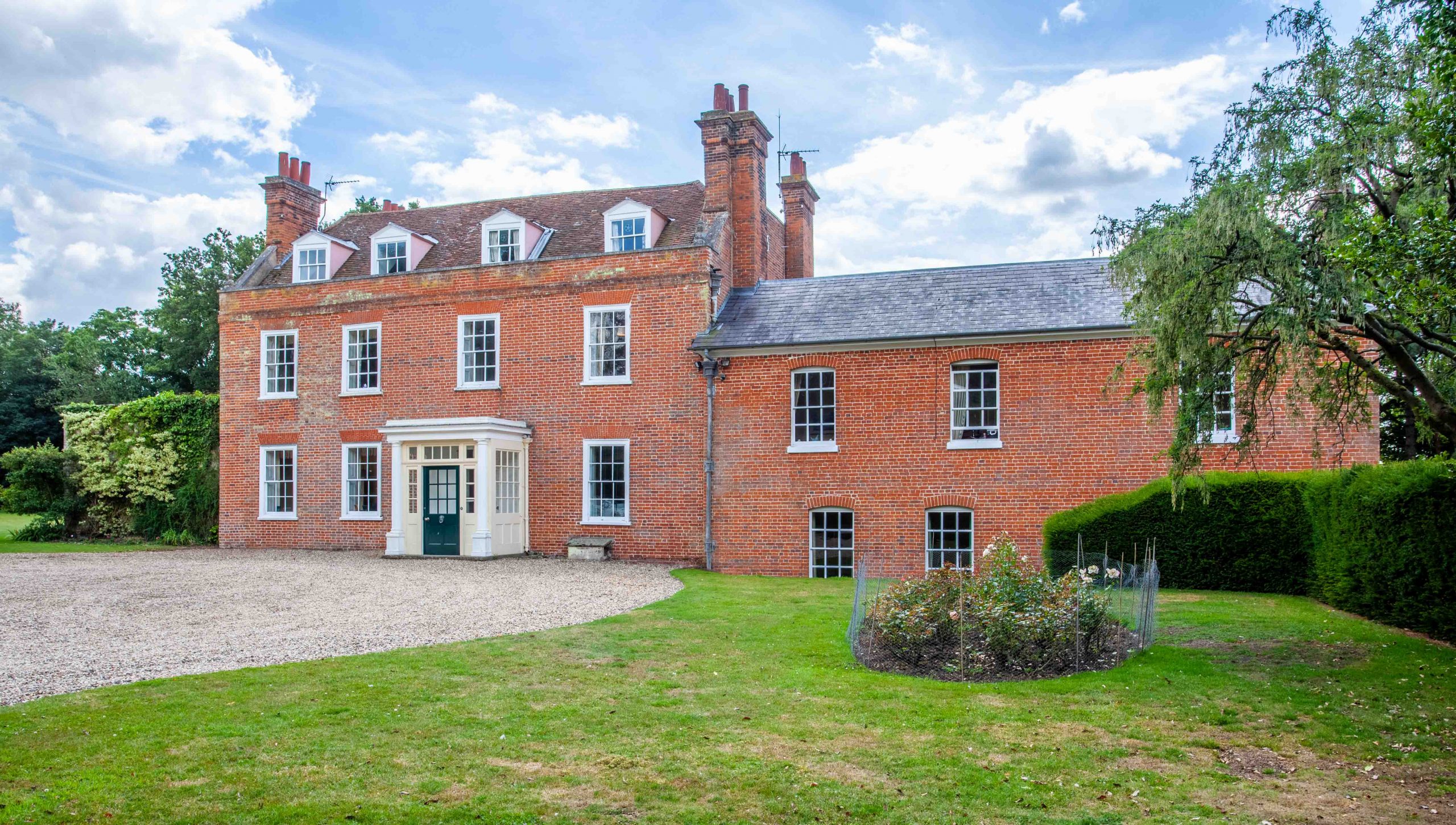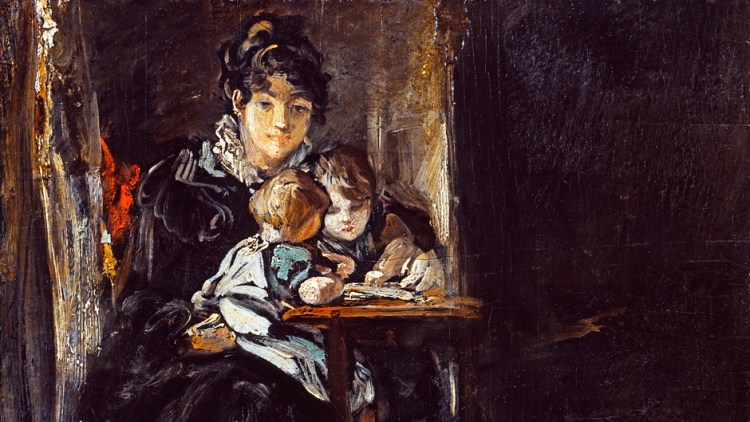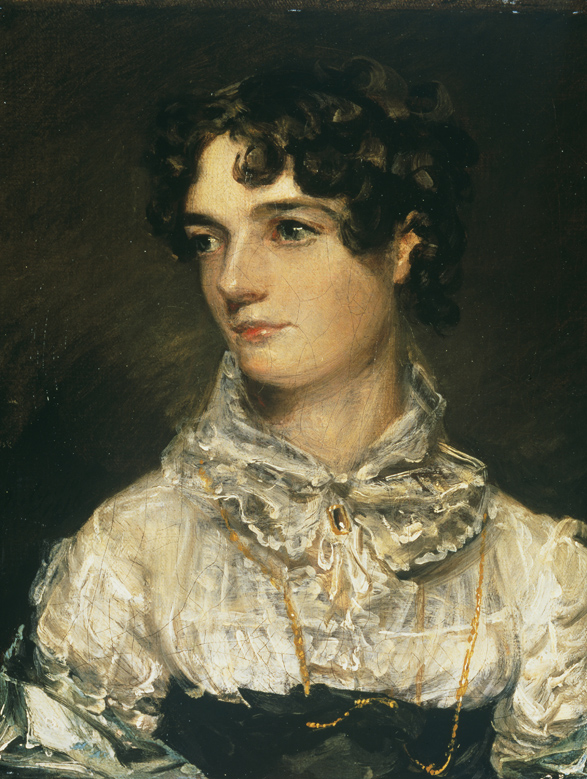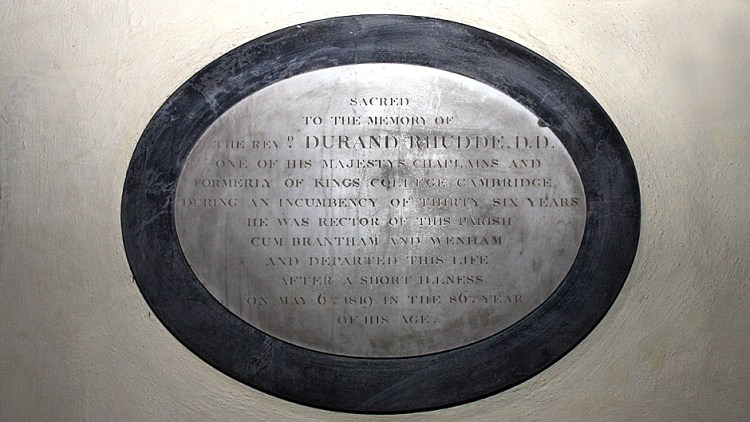The Old Rectory
Maria Bicknell was daughter of the Solicitor to the Admiralty, her grandfather rector of East Bergholt and where Constable and Maria first met in 1800 when she was just 12 years old and Constable in his early 20’s. The two fell in love in 1809, but partly because of the rector’s opposition they did not marry until 1816.
- 35
- Home of Dr Rhudde, grandfather of Maria Bicknell (Wife of John Constable)
- 51.969984, 1.020889
Details
REV DR DURAND RHUDDE
In 1782 Rev Dr Durand Rhudde was appointed rector of ‘Brantham-cum-Bergholt. Dr Rhudde was a Cambridge graduate and one of King George III’s Chaplains-in-Ordinary of which there were several acting in an advisory capacity to the king’s chaplain.
- he was not a wealthy man and his appointment to the Brantham-cum-Bergholt parish was a godsend because it provided him with a modest salary and a free house.
- his financial fortunes changed when his sister and her wealthy husband died without having any children, leaving their considerable fortune to him. Inheriting all this money enabled the Rev Dr Rhudde to lead a flamboyant lifestyle and hold threats of disinheritance over the rest of the Bicknell/Rhudde family.
Maria’s proposed marriage to John Constable
When his grand-daughter Maria announced her intention to marry John Constable, Dr Rhudde strongly objected. He told the Bicknell family that unless they stopped the association between Maria and John Constable, he would disinherit the whole family. He is said to have objected to the match because Constable did not have sufficient money to keep Maria, but there were other reasons
- the fact that he had quarreled with John’s father, Golding Constable a few years previously and
- that the young John Constable was close friends with John Dunthorne, the local artist/glazier/handyman/atheist
- class – John was born the same year as Jane Austin and so the rural social scene was similar to that Jane describes in her novels. Maria’s grandfather would have been ‘gentry’ while John Constable’s father, although wealthy would have been disparaged as a miller and as being rich through ‘trade’.
In reality such a marriage would not have been approved of by either family.
The imposed separation of John Constable and Maria lasted for seven years and led to both Maria and John becoming depressed. For John, the separation greatly affected his mood swings and this had an adverse effect on his painting.
Maria was very unhappy with the separation from John Constable and the gap which opened up between her and her father, in trying to maintain her relationship with John and remain loyal to her family. The responsibility of making sure Rev Rhudde’s edict was obeyed and that Maria did not meet with John Constable, fell largely on the shoulders of Maria’s father, Charles Bicknell. Charles was not totally committed to Rhudde’s demands, but gave in to them under the threat of the disinheritance of his children.
In 1816 John and Maria decided they would marry whatever the consequences and were married in London. Rev Dr Rhudde eventually accepted the inevitable and when he died in 1819 he left £4000 of Government Stock to Maria and to each of the Bicknell children.
MARIA BICKNELL
Maria Bicknell was born into a wealthy family. Her father Charles Bicknell was a London lawyer, solicitor to the Prince Regent and the admiralty. He fathered seven children by two wives – Maria’s mother was his second wife. Maria was due to inherit a substantial sum of money from her grandfather, Rev Dr Durand Rhudde – the father of Charles’ second wife.
- Maria Elizabeth Bicknell was Maria’s mother and Charles Bicknell’s second wife, she gave birth to five children, (Maria being the eldest) and died in May 1815 when her daughter was in her early 20s
- Rev Dr Durrand Rhudd was Maria’s wealthy grandfather who had been a *Chaplain-in-Ordinary to George III, but who had then become rector of East Bergholt Church. He had inherited all his money from his sister who married a rich man, died childless and left everything to him and his daughter (Maria’s mother). *Note:There were thirty six “Chaplains-in -Ordinary” who appear to have been an advisory body which reported to the Chaplain who had direct access to the King.
At the time (1809) John Constable was a struggling artist, living on only £100 a year (an allowance from his parents) plus a little money earned from selling portraits. This was not enough money to support himself, never mind a wife and children
- During twelve years of marriage (1816-1828), Maria was continually pregnant, giving birth to seven children (plus one miscarriage) which put an enormous strain on her health.
- By 1824, Maria had given birth to four children, John-Charles, Maria-Louisa (Minna), Charles-Golding (Charley) and Isabel and Mrs Roberts had been appointed as full time nanny and governess. Although suffering from tuberculosis, Maria gave birth to three more children, Emily (born prematurely), Alfie (born prematurely) and Lionel-Bicknell before dying a few months later.
- The last three pregnancies and births left Maria in a ‘sad and weak condition’ (John Constable) and she had difficulty in feeding the babies.
- “Although Constable appeared in his usual spirits in her presence, yet before I left the house, he took me into another room, wrung my hand, and burst into tears, without speaking”. Letter written in 1828 by friend and biographer, Charles Leslie
- “I am intensely distressed and can hardly attend to anything.” Letter written by John Constable in 1828 to a client dissatisfied with part of his work.
The sequence of events leading to Maria’s death were distressing for her and the whole family. The final stages of consumption (known as tuberculosis today) were painful – vomiting, bleeding, fever and lassitude with Maria’s speech becoming no more than a whisper.
- January (2nd) 1828 Maria’s seventh child, Lionel Bicknell was born
- March 1828 Maria’s father died leaving her £20,000 which put an end to the Constable’s money worries
- April 1828, Maria’s tubercular coughing became very much worse and Alfie (her sixth child) contracted whooping cough
- May 1828 – John sent Maria and the children (including Alfie) to Brighton for the air but after six weeks with no improvement to their health, the family returned to London
- November (23rd) 1828 Maria died at the age of forty one
After Maria’s death, Constable wrote to his brother Golding, “Hourly do I feel the loss of my departed Angel – God only knows how my children will be brought up… the face of the World is totally changed to me.” Letter written in 1828 by John Constable to his older brother, Golding.
- 35
- Home of Dr Rhudde, grandfather of Maria Bicknell (Wife of John Constable)
- 51.969984, 1.020889




